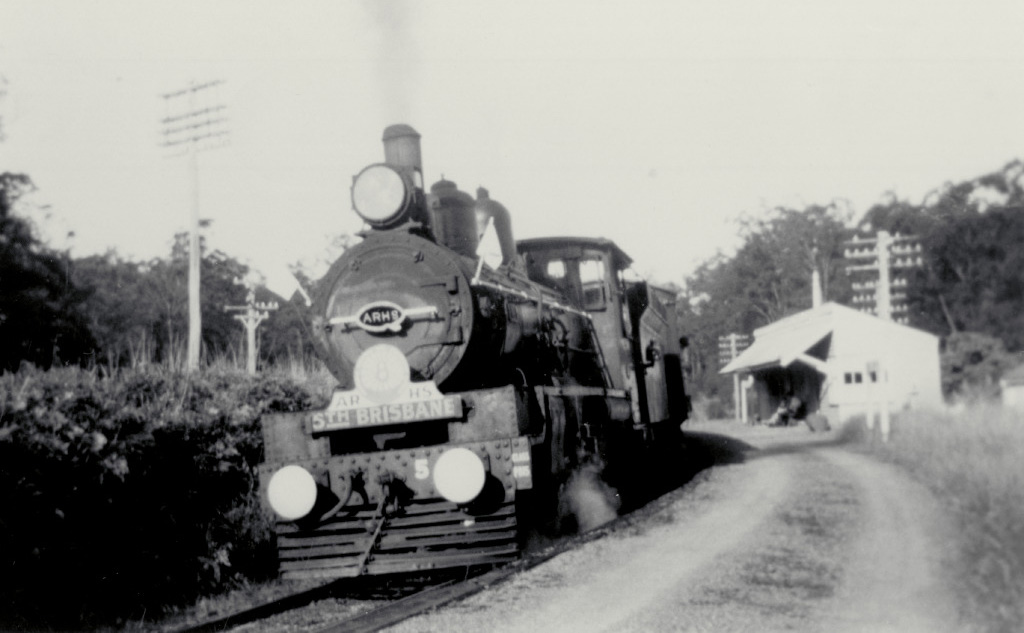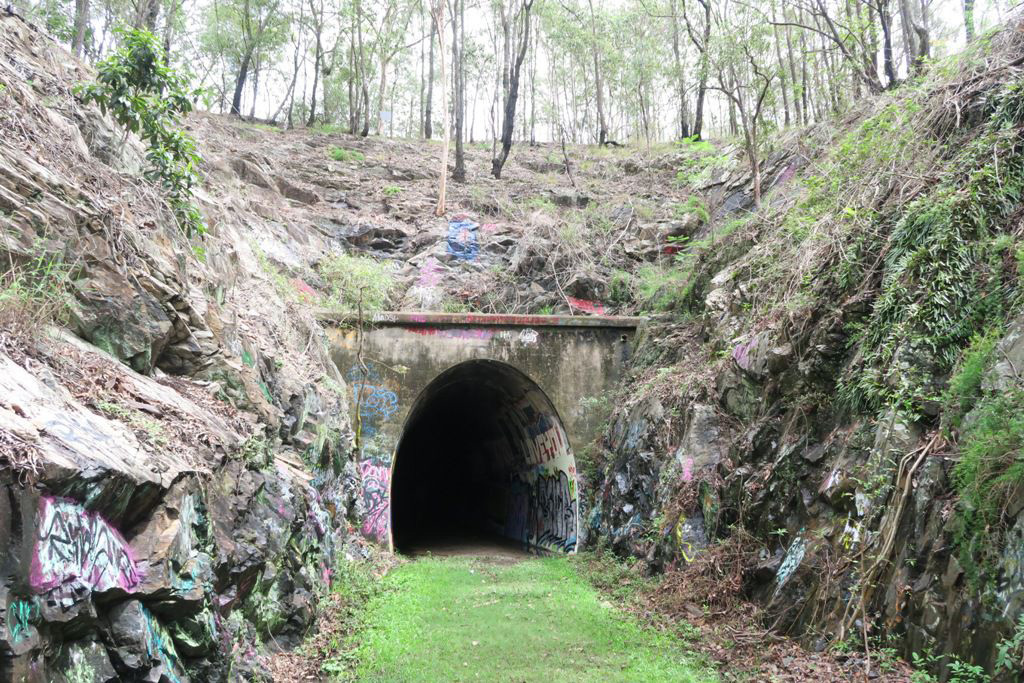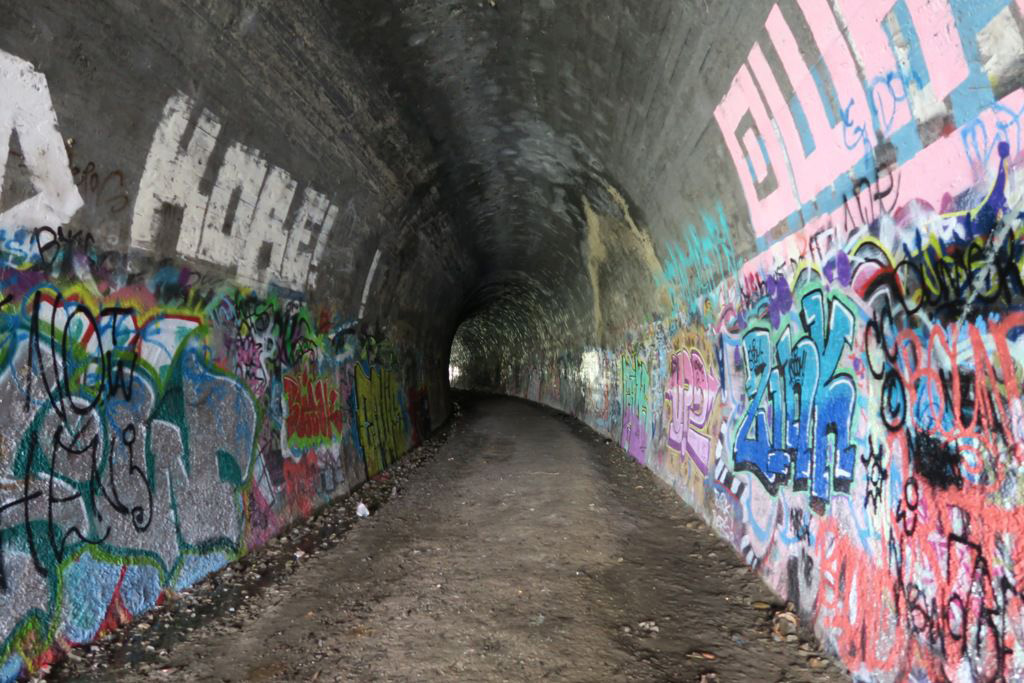Ernest Junction Railway Tunnel
What
One of the last remnants of the former Brisbane–South Coast railway line, which closed in 1964, has been entered into the Queensland Heritage Register.
The Ernest Junction Railway Tunnel, in Molendinar, 6km west of Southport, was built during 1885-1889 and was a major engineering feat in its day. It now sits quietly and unobtrusively in bushland surrounded by suburbia, but delights those that happen upon it, evoking feelings of surprise and mystery.
Image gallery
When and where
By the 1880s, Southport was becoming the most popular seaside destination in Queensland, with schools, banks, guest houses and hotels (and even the Governor’s residence in the 1890s) stimulating its growth as a fashionable 19th century resort.
Reflecting this growth, a railway line from Yeerongpilly south to Loganlea was opened in 1885, soon after extended to Beenleigh, and then further extended to Southport, Coolangatta and Tweed Heads by 1903.
Ernest Junction Railway Station played an important role in this network, being the terminus for three railway lines – to Brisbane, to Southport, and to Nerang and Tweed Heads – and being the station where Brisbane trains diverged to service each of these destinations.
With motor vehicles becoming more affordable and post-war petrol rationing ending in the 1950s, holiday makers in increasing numbers drove themselves to the South Coast which, by the 1960s, became more popularly known as the “Gold Coast”.
In these decades the number of rail passengers decreased to such a level that the network became unprofitable and was closed in its entirety by 1964. The removal of railway infrastructure, including the tracks, soon followed.
Facts and figures
The Ernest Junction Railway Tunnel was constructed through a hill between Ernest Junction Railway Station and Coombabah Railway Station to the north.
The tunnel is 114 metres long, 4.4 metres wide at its base and 4.9 metres high, and runs some 21 metres below the crest of the hill. It is a curved tunnel and remains publicly accessible, presenting a picturesque unfolding sequence of views for those walking through it.
The tunnel remains important in demonstrating Queensland’s railway network development in the late 1800s. It was one of the first tunnels in Queensland to be lined with concrete rather than bricks, a considerable monetary saving for the Railways Department as concrete was a cheaper material that could be fabricated and formed by relatively unskilled labourers.
The Ernest Junction Railway Station and Ernest Junction Railway Tunnel were both originally named Southport Junction, with their names changed in 1890 to honour the then local Member of Parliament – Ernest James Stevens.
Today the tunnel is a local tourist attraction, a part of a walking trail and (having surprisingly fine acoustics) is even an impromptu music venue, with musical performances at the tunnel a part of the 2019 Gold Coast Open House program.
An application to list the Ernest Junction Railway Tunnel on the Queensland Heritage Register was made in February 2019 by the community group the “Ernest Junction Tunnel Friends”, with the tunnel formally placed on the register in May 2019.
Reflections and learnings
“The Ernest Junction Railway Tunnel was a key component of the South Coast railway line that, when opened in 1889, had an enormous social impact on the South Coast.
For the first time, ordinary people had access to the coast. The railway suddenly made day-tripping possible, and, although the journey was almost three hours each way in the early years, it was a great advance on the horse drawn traffic it replaced.
With the opening of the railway line, working-class families from Brisbane and further afield had access to the coast for their holidays, and the coast’s popularity as a tourist destination never looked back.
We are delighted that the Ernest Junction Railway Tunnel has been heritage-listed, protecting it for future generations and complementing the tunnel’s re-emergence as a popular attraction and public space in its own right."
—Theo and Judith deBoer, Ernest Junction Tunnel Friends
Find out more
More information on the Ernest Junction Railway Tunnel is available at Ernest Junction Railway Tunnel.





